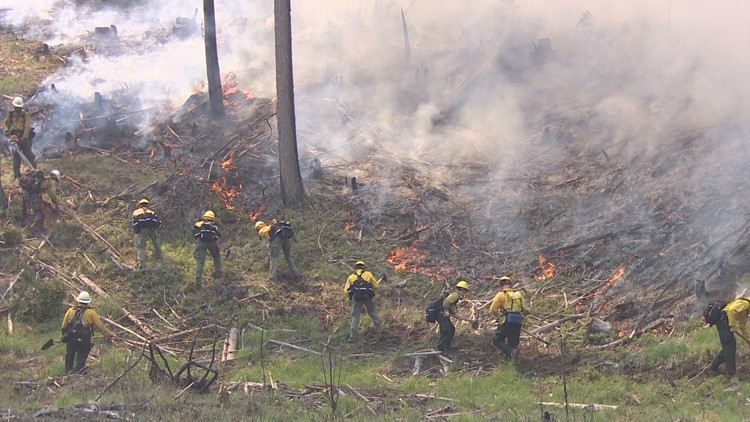If you can control fires, you can control much of the smoke. But what does it take to manage wildfires on some 13 million acres of state and private land?
In the operations center at the Department of Natural Resources, state Fire Operations Chief Aaron Schmidt is busy at work. He's not only managing resources to fight our current wildfires but working to anticipate the next fire.
“We’re trying to plan our fires and plan where they’re going to be, based on weather intelligence,” said Schmidt. "And our Holy Grail is a season-ending event. That’s when it starts to rain and really doesn’t stop.”
Right now, that weather intel is making no promises, or even providing clues as to when the rainy season could begin. Because of steep, dangerous terrain, the Maple Fire burning along the southeast side of the Olympic mountains cannot be contained on the western edge. That part of the fire may not be fully out until the winter snows come. Fortunately, there are no homes to protect in that direction, said Schmidt.
Western Washington is home to an increasing share of fire starts, but most have been kept small. DNR has pursued an aggressive strategy of attacking fires with helicopters and small fixed-wing Fire Boss Air Tractor to knock out fires when first spotted, a strategy adopted in 2016 that appears to be working.
That doesn’t mean all of the state's fires are small. East of the Cascades, lightning caused the Crescent Mountain fire near Twisp, which has consumed more than 31,000 acres. Lightning also sparked the Cougar Creek Fire near Entiat, which has scorched more than 38,000 acres.
Smoke from both fires can be seen from the GOES-East weather satellite as major contributors to Western Washington’s unhealthy air quality. That smoke has also grounded aircraft, said Schmidt, but the pall of smoke also tends to make the fires less active.
What does the state have to work with? Around 30 aircraft ranging from helicopters of various sizes to small and large fixed-wing fire bombers. There are 120 engines and ground crews, and lots of help from outside the state, including some crews from Australia and New Zealand, where it’s winter. There are firefighters from Mississippi, South Carolina, Florida, Michigan and Wisconsin and an aircraft and crew out of the province of Alberta, Canada.
“The nice thing about wildfire,” said Schmidt. “Is generally, somebody is always busy and there’s always somebody who’s not busy.”
More of those resources may be needed as the trend to longer fire seasons keeps going. Many firefighters are seasonal, like students and teachers for whom the start of school is looming.



